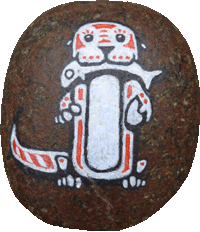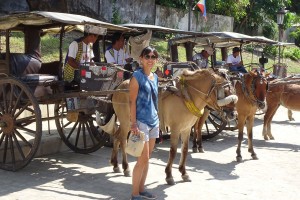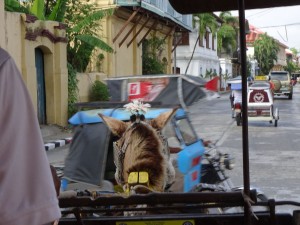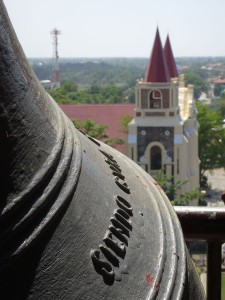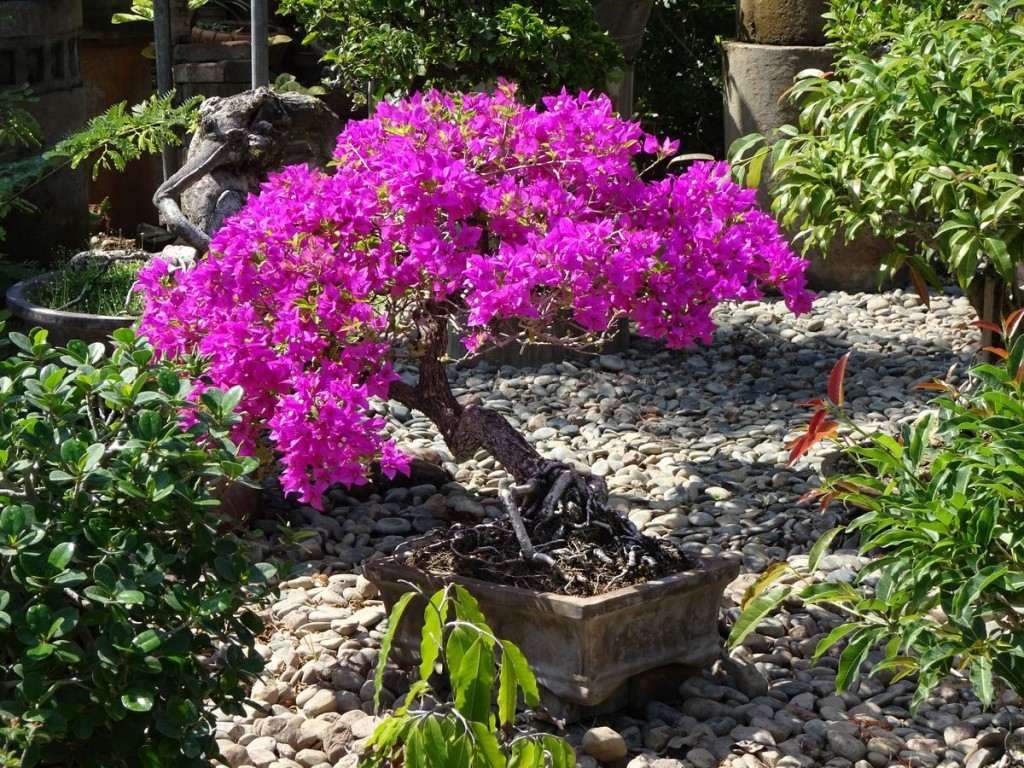We named our horse Tamburlaine, for he was strong and noble and had a fuffy mane.
Tamburlaine trotted us around Vigan for four hours in a kalesa – the local two-wheeled carriages that are now mostly for tourists in this little Spanish colonial town. He was only strong and noble in our imagination: they are actually tiny horses and some of them were frankly bags of bones, though at least Tamburlaine looked properly fed and in decent condition. His driver was Tony. Tony and Tamburlaine.
We visited the gnarly 16th century belltower in nearby Bantay, which contained some good bells. We visited the Fr. Burgos and Presidet Quirino museums in the old town, both handsome town houses with old furniture and many presidential shoes and hats in the latter. On close inspection we discovered that the windows of all the old houses of Vigan are glazed not with glass but with thin sheets of oyster shells. How cool is that! We visited the Hidden Garden, which is one of those charmingly ludicrous “tourist attractions” that I can best describe as a cheesy garden centre with sprawling restaurant. Still, magnificent bonsai display (I want a bougainvilla bonsai!) and superb watermelon shake. Random aside: in SE Asia “shake” means fruit blended with ice, there’s no ice cream or milk involved.
We drew the line when Tony next stopped us at a zoo in another outlying barangay of Vigan. Given how meagre and concrete most of the smaller human homes in the Philippines look, I cannot imagine being anything other than depressed by the animals in a small suburban zoo here. It’s not uncommon, though; there was at least one zoo on Bohol as well, and I guess at least they don’t have to worry too much about how to keep their tigers warm enough.So Tamburlaine took us back to town through winding lanes of suburban houses and we enjoyed people watching instead. Lots of the gardens were beautifully tended, once you get your eye into the fundamental differences between English and Philippine gardens, and many properties had yards alongside with a few chickens or cockerels, each with it’s own little teepee to live in.
Our evening meal was a complete surprise. Calle Brewery served up modern, and extremely good, US-style barbecue food and decent craft beers. As far as I can tell it’s the very first cosmopolitan place to try opening here, the kind of process that started maybe 20 years ago in the UK when some provincial towns and cities started sprouting the kind of hip and innovative eating experiences previously only found in London.I’m really unclear about language in the Philippines. We keep being told that English is one of the two official languages and everyone speaks it. Yet even with people in the tourist trade like our guide Carlos, and the smartly dressed receptionist at our hotel, we can’t carry on anything like a normal English conversation. I think perhaps there are just way too many idiomatic differences (“Can I have a toilet roll?” “Huh?” “Toilet roll” “Er…?” “Toilet… paper…?” “Ahhhhh! Yes, certainly.”) and perhaps even grammatical differences, and then a very strong local accent on top. Most people we encounter though, like Tony the kalesa driver, really only have a smattering of English words to get across basic tourist messages (“You go Hidden Garden? Is good.”). Carlos told us that it’s now the main language taught in schools though; 4 hours of English vs 1 hour of Tagalog perhaps, which suggests that we should really be talking to the kids! : )
Related Images:
